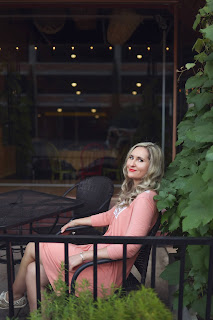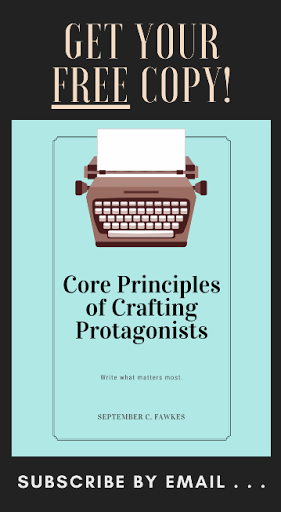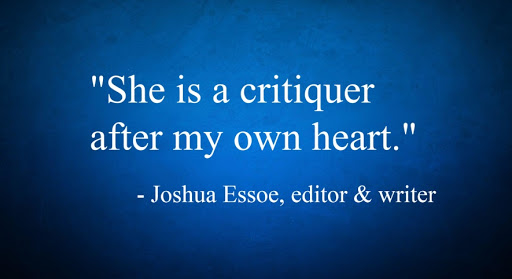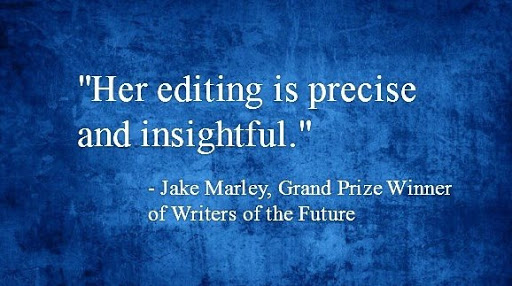I used to think tension and conflict were the same thing. I mean don't they go together?
Well, a lot of the time they do, but it's entirely possible to have one without the other. They often go hand-in-hand, but they aren't the same thing. Conflict doesn't necessarily equal tension, and tension doesn't equal conflict.
Lately I've been editing stories that seem to have so much conflict and no tension! I don't care about the conflicts. I don't care about the characters. Because there is no tension.
Tension isn't the conflict.
A couple of months ago, I wrote this post on Mastering Stylistic Tension. In the comments, Becca Puglisi said:
I learned a long time ago that while conflict and tension are often considered to be synonymous, they’re different. Tension is key for winding up the character’s—and therefore the reader’s-emotions.
I admit that for some reason I read it as "Tension is the key for winding up," and my mind filled with an actual image of a key winding something up. Tension winds up. Conflict is problems that collide. Tension doesn't need problems to collide, tension is often the promise or potential for problems colliding. My oldest brother pointed out that there are action movies that have conflict after conflict, but no tension. They are a spectacle--blasts, explosions, fire. Then, he went on to say, there are movies like Jaws that have scenes that work largely off tension.
I said in my Mastering Stylistic Tension post, "In some ways, it’s not the conflict itself that draws readers in, it’s the promise of conflicts," which is often the tension.
Tension invests us personally in the story. We feel it. It's anticipation, it's hope or dread for what will happen. It's a tangible subtext or undercurrent for what could happen.
Tension is defined as a straining or stretching; intense suppressed emotions.
Conflict means "to come to a collision;" to fight or contend.
So tension may suggest a conflict, but it is not the conflict itself. Conflict may be an object, but tension is the key winding it up. Sometimes writers try so hard to put in so much conflict to make their stories interesting when what their story needs is tension for the conflicts they already have.
I'll give an example from my own experience.
Last year I was working on a sequence of flashbacks for my novel. While not the main purpose of the flashbacks, it was important that I illustrate a romantic relationship in them, because the relationship itself is important to a main character and what happens in the present timeline. I was stuck trying to figure out how to communicate the uniqueness and complexity of the relationship in such a short space. In an old, old version of this story, I had planned to use a lot of romantic gestures to convey the relationship, but in working on these flashbacks, I realized that the romance and the conflict it brought (which deals with "forbidden love") wasn't as powerful as the tension it could have.
I scrapped the idea of the characters touching and kissing, and instead focused on their powerful desires to touch and kiss when they weren't allowed or able to; I gave one of the characters a particular reason and a personal commitment to not give the other affection.
The scene immediately became more interesting. The tension was palpable, their desires electric, but because they could not give into their desires, the tension couldn't release, regardless of how much they or the audience wanted it to.
The conflict is forbidden love, but the tension is held in the drawn out moments of a desire that can't be manifested.
This is one of the reasons that sexual tension can be so powerful in stories. It's not the colliding problems that come with being with that person, it's the subtext and undercurrent of wanting to be with that person, but not being with them. Once the couple is together, that tension ends.
Likewise, some of the best dialogue comes from tension, not straight-up conflict. It comes from subtext, from what's not being directly said. Once the dialogue becomes direct, the tension ends and the problems collide in conflict. Tension often comes before direct conflict. And if that isn't happening much in your story, it should.
As Mindy Kaling once explained, sometimes the best tension comes from the characters trying to avoid conflict, from them trying to stop it from bubbling out into the open. The closer the conflict gets to the open and the harder a character tries to stop it, the stronger the tension gets. It winds up, tighter and tighter. We as an audience anticipate its release.
That's what draws a reader into the story.
So make sure that your story has tension and conflict, and not just one or the other. If you have a story with a bunch of conflict, but your readers aren't interested, you may need more tension. If you only have tension and no conflict, the reader may end the story feeling cheated. Use both.
Related Posts
How to Write What's Not Written (Subtext)Crafting a Killer Undercurrent

















0 comments:
Post a Comment
I love comments :)